Fragile States Index

The Fragile States Index (formerly the Failed States Index) is an annual report published by the United States think-tank the Fund for Peace and the magazine Foreign Policy since 2005. The list only assesses sovereign states (as determined by membership in the United Nations).[1] Several territories are excluded until their political status and UN membership is ratified in international law. For example, Taiwan, the Palestinian Territories, Northern Cyprus, Kosovo and Western Sahara are not included in the list, even though some are recognized as sovereign states by some nations. Ranking is based on the total scores of the 12 indicators (see below.) For each indicator, the ratings are placed on a scale of 0 to 10, with 0 being the lowest intensity (most stable) and 10 being the highest intensity (least stable). The total score is the sum of the 12 indicators and is on a scale of 0-120.[1]
Indicators of state vulnerability
The index's ranks are based on twelve indicators of state vulnerability - four social, two economic and six political.[2] The indicators are not designed to forecast when states may experience violence or collapse. Instead, they are meant to measure a state's vulnerability to collapse or conflict. All countries in the red (Alert, FSI of 90 or more), orange (Warning, FSI of 60 or more), or yellow (Moderate, FSI of 30 or more) categories display some features that make parts of their societies and institutions vulnerable to failure. Some in the yellow zone may be failing at a faster rate than those in the more dangerous orange or red zones, and therefore could experience violence sooner. Conversely, some in the red zone, though critical, may exhibit some positive signs of recovery or be deteriorating slowly, giving them time to adopt mitigating strategies.[1]
Social indicators
- Demographic pressures: including the pressures deriving from high volume population density relative to food supply and other life-sustaining resources. The pressure from a population's settlement patterns and physical settings, including border disputes, ownership or occupancy of land, access to transportation outlets, control of religious or historical sites, and proximity to environmental hazards.[3]
- Massive movement of refugees and internally displaced persons: forced uprooting of large communities as a result of random or targeted violence and/or repression, causing food shortages, disease, lack of clean water, land competition, lack of public housing, and turmoil that can spiral into larger humanitarian and security problems, both within and between countries.[4]
- Legacy of vengeance-seeking group grievance: based on recent or past injustices, which could date back centuries. Including atrocities committed with impunity against communal groups and/or specific groups singled out by state authorities, or by dominant groups, for persecution or repression. Institutionalized political exclusion. Public scapegoating of groups believed to have acquired wealth, status or power as evidenced in the emergence of "hate" radio, pamphleteering and stereotypical or nationalistic political rhetoric.[5]
- Chronic and sustained human flight: both the "brain drain" of professionals, intellectuals and political dissidents and voluntary emigration of "the middle class." Growth of exile/expatriate communities are also used as part of this indicator.[6]
Economic indicators
- Uneven economic development along group lines: determined by group-based inequality, or perceived inequality, in education, jobs, and economic status. Also measured by group-based poverty levels, infant mortality rates, education levels.[7]
- Sharp and/or severe economic decline: measured by a progressive economic decline of the society as a whole (using: per capita income, GNP, debt, child mortality rates, poverty levels, business failures.) A sudden drop in commodity prices, trade revenue, foreign investment or debt payments. Collapse or devaluation of the national currency and a growth of hidden economies, including the drug trade, smuggling, and capital flight. Failure of the state to pay salaries of government employees and armed forces or to meet other financial obligations to its citizens, such as pension payments.[8]
Political indicators
- Criminalization and/or delegitimisation of the state: endemic corruption or profiteering by ruling elites and resistance to transparency, accountability and political representation. Includes any widespread loss of popular confidence in state institutions and processes.[9]
- Progressive deterioration of public services: a disappearance of basic state functions that serve the people, including failure to protect citizens from terrorism and violence and to provide essential services, such as health, education, sanitation, public transportation. Also using the state apparatus for agencies that serve the ruling elites, such as the security forces, presidential staff, central bank, diplomatic service, customs and collection agencies.[10]
- Widespread violation of human rights: an emergence of authoritarian, dictatorial or military rule in which constitutional and democratic institutions and processes are suspended or manipulated. Outbreaks of politically inspired (as opposed to criminal) violence against innocent civilians. A rising number of political prisoners or dissidents who are denied due process consistent with international norms and practices. Any widespread abuse of legal, political and social rights, including those of individuals, groups or cultural institutions (e.g., harassment of the press, politicization of the judiciary, internal use of military for political ends, public repression of political opponents, religious or cultural persecution.)[11]
- Security apparatus as "state within a state": an emergence of elite or praetorian guards that operate with impunity. Emergence of state-sponsored or state-supported private militias that terrorize political opponents, suspected "enemies," or civilians seen to be sympathetic to the opposition. An "army within an army" that serves the interests of the dominant military or political clique. Emergence of rival militias, guerilla forces or private armies in an armed struggle or protracted violent campaigns against state security forces.[12]
- Rise of factionalised elites: a fragmentation of ruling elites and state institutions along group lines. Use of aggressive nationalistic rhetoric by ruling elites, especially destructive forms of communal irredentism or communal solidarity (e.g., "ethnic cleansing", "defending the faith").[13]
- Intervention of other states or external factors: military or Paramilitary engagement in the internal affairs of the state at risk by outside armies, states, identity groups or entities that affect the internal balance of power or resolution of the conflict. Intervention by donors, especially if there is a tendency towards over-dependence on foreign aid or peacekeeping missions.[14]
Fragile states list
For the entire FSI ranking, see List of countries by Fragile States Index.
2014
The top 20 states on the 2014 Failed States Index is shown below. Change in rank from the previous year is in parentheses.[15]
-
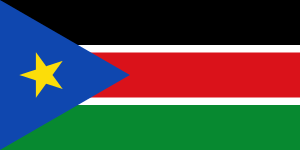 South Sudan (+3)
South Sudan (+3) -
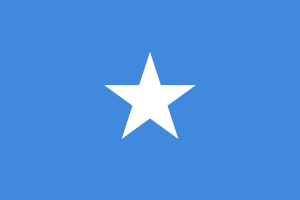 Somalia (-1)
Somalia (-1) -
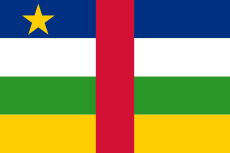 Central African Republic (+6)
Central African Republic (+6) -
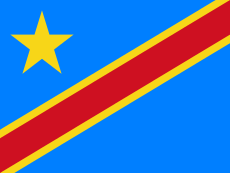 Democratic Republic of the Congo (0)
Democratic Republic of the Congo (0) -
 Sudan (0)
Sudan (0) -
 Chad (-1)
Chad (-1) -
 Yemen (+1)
Yemen (+1) -
 Afghanistan (-1)
Afghanistan (-1) -
 Haiti (0)
Haiti (0) -
 Pakistan (+3)
Pakistan (+3) -
 Zimbabwe (-1)
Zimbabwe (-1) -
 Guinea (+2)
Guinea (+2) -
 Iraq (0)
Iraq (0) -
 Ivory Coast (0)
Ivory Coast (0) -
 Syria (Newly ranked)
Syria (Newly ranked) -
 Guinea-Bissau (-1)
Guinea-Bissau (-1) -
 Nigeria (0)
Nigeria (0) -
 Kenya (0)
Kenya (0) -
 Ethiopia (+1)
Ethiopia (+1) -
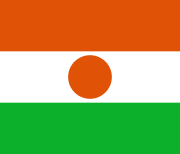 Niger (-1)
Niger (-1)
2013
The top 20 states on the 2013 Failed States Index is shown below. Change in rank from the previous year is in parentheses.[16]

-
 Somalia (0)
Somalia (0) -
 Democratic Republic of the Congo (0)
Democratic Republic of the Congo (0) -
 Sudan (0)
Sudan (0) -
 South Sudan (Newly ranked)
South Sudan (Newly ranked) -
 Chad (-1)
Chad (-1) -
 Yemen (+2)
Yemen (+2) -
 Afghanistan (-1)
Afghanistan (-1) -
 Haiti (-1)
Haiti (-1) -
 Central African Republic (+1)
Central African Republic (+1) -
 Zimbabwe (-5)
Zimbabwe (-5) -
 Iraq (-2)
Iraq (-2) -
 Ivory Coast (-1)
Ivory Coast (-1) -
 Pakistan (0)
Pakistan (0) -
 Guinea (-2)
Guinea (-2) -
 Guinea-Bissau (0)
Guinea-Bissau (0) -
 Nigeria (-2)
Nigeria (-2) -
 Kenya (-1)
Kenya (-1) -
 Niger (+1)
Niger (+1) -
 Ethiopia (-2)
Ethiopia (-2) -
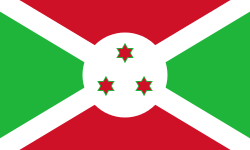 Burundi (-2)
Burundi (-2)
2012
177 states were included in the list, of which 33 were classified as "alert", 92 as "warning", 39 as "moderate", 13 as "sustainable". The worst 20 states are shown below. Change in rank from 2011 is shown in parentheses.[18]

-
 Somalia (0)
Somalia (0) -
 Democratic Republic of the Congo (+2)
Democratic Republic of the Congo (+2) -
 Sudan (0)
Sudan (0) -
 Chad (-2)
Chad (-2) -
 Zimbabwe (+1)
Zimbabwe (+1) -
 Afghanistan (+1)
Afghanistan (+1) -
 Haiti (-2)
Haiti (-2) -
 Yemen (+5)
Yemen (+5) -
 Iraq (0)
Iraq (0) -
 Central African Republic (-2)
Central African Republic (-2) -
 Ivory Coast (-1)
Ivory Coast (-1) -
 Guinea (-1)
Guinea (-1) -
 Pakistan (-1)
Pakistan (-1) -
 Nigeria (0)
Nigeria (0) -
 Guinea-Bissau (+3)
Guinea-Bissau (+3) -
 Kenya (0)
Kenya (0) -
 Ethiopia (+3)
Ethiopia (+3) -
 Burundi (-1)
Burundi (-1) -
 Niger (-4)
Niger (-4) -
 Uganda (+1)
Uganda (+1)
2011
177 states were included in the list, of which 35 were classified as "alert", 88 as "warning", 40 as "moderate", 11 as "sustainable". The worst 20 states are shown below. Change in rank from 2010 is shown in parentheses. There was a tie between Myanmar and Guinea Bissau for 18th.[19]
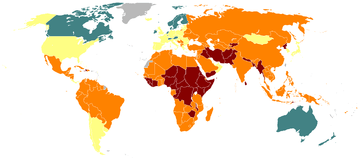
-
 Somalia (0)
Somalia (0) -
 Chad (0)
Chad (0) -
 Sudan (0)
Sudan (0) -
 Democratic Republic of the Congo (+1)
Democratic Republic of the Congo (+1) -
 Haiti (+6)
Haiti (+6) -
 Zimbabwe (-2)
Zimbabwe (-2) -
 Afghanistan (-1)
Afghanistan (-1) -
 Central African Republic (0)
Central African Republic (0) -
 Iraq (-2)
Iraq (-2) -
 Ivory Coast (+2)
Ivory Coast (+2) -
 Guinea (-2)
Guinea (-2) -
 Pakistan (-2)
Pakistan (-2) -
 Yemen (+2)
Yemen (+2) -
 Nigeria (0)
Nigeria (0) -
 Niger (+5)
Niger (+5) -
 Kenya (-3)
Kenya (-3) -
 Burundi (+6)
Burundi (+6) - -
 Guinea-Bissau (+4)
Guinea-Bissau (+4) - -
 Myanmar (-2)
Myanmar (-2) -
 Ethiopia (-3)
Ethiopia (-3)
2010
177 states were included in the list, of which 37 were classified as "alert", 92 as "warning", 35 as "moderate", 13 as "sustainable". The lowest 20 states are shown below. Change in rank from 2009 is shown in parentheses. There was a tie for 19th place between North Korea and Niger.[20]
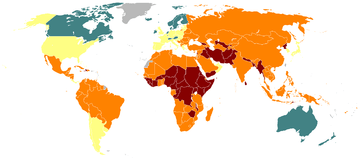
-
 Somalia (0)
Somalia (0) -
 Chad (+2)
Chad (+2) -
 Sudan (0)
Sudan (0) -
 Zimbabwe (-2)
Zimbabwe (-2) -
 Democratic Republic of the Congo (0)
Democratic Republic of the Congo (0) -
 Afghanistan (+1)
Afghanistan (+1) -
 Iraq (-1)
Iraq (-1) -
 Central African Republic (0)
Central African Republic (0) -
 Guinea (0)
Guinea (0) -
 Pakistan (0)
Pakistan (0) -
 Haiti (+1)
Haiti (+1) -
 Ivory Coast (-1)
Ivory Coast (-1) -
 Kenya (+1)
Kenya (+1) -
 Nigeria (+1)
Nigeria (+1) -
 Yemen (+4)
Yemen (+4) -
.svg.png) Burma (-3)
Burma (-3) -
 Ethiopia (-1)
Ethiopia (-1) -
 East Timor (+2)
East Timor (+2) - -
 North Korea (-2)
North Korea (-2) - -
 Niger (+4)
Niger (+4)
2009
177 states were included in the list, of which 38 were classified as "alert", 93 as "warning", 33 as "moderate", 13 as "sustainable". The worst 20 states are shown below. Change in rank from 2008 is shown in parentheses.[21]

-
 Somalia (0)
Somalia (0) -
 Zimbabwe (+1)
Zimbabwe (+1) -
 Sudan (-1)
Sudan (-1) -
 Chad (0)
Chad (0) -
 Democratic Republic of the Congo (+1)
Democratic Republic of the Congo (+1) -
 Iraq (-1)
Iraq (-1) -
 Afghanistan (0)
Afghanistan (0) -
 Central African Republic (+2)
Central African Republic (+2) -
 Guinea (+2)
Guinea (+2) -
 Pakistan (-1)
Pakistan (-1) -
 Ivory Coast (-3)
Ivory Coast (-3) -
 Haiti (+2)
Haiti (+2) -
.svg.png) Burma (0)
Burma (0) -
 Kenya (+12)
Kenya (+12) -
 Nigeria (+3)
Nigeria (+3) -
 Ethiopia (0)
Ethiopia (0) -
 North Korea (-2)
North Korea (-2) -
 Yemen (+3)
Yemen (+3) -
 Bangladesh (-7)
Bangladesh (-7) -
 East Timor (+5)
East Timor (+5)
2008
177 states were included in the list, of which 35 were classified as "alert", 92 as "warning", 35 as "moderate", 15 as "sustainable". The worst 20 states are shown below. Change in rank from 2007 is shown in parentheses.[22]

-
 Somalia (+2)
Somalia (+2) -
 Sudan (-1)
Sudan (-1) -
 Zimbabwe (+1)
Zimbabwe (+1) -
 Chad (+1)
Chad (+1) -
.svg.png) Iraq (-3)
Iraq (-3) -
 Democratic Republic of the Congo (+1)
Democratic Republic of the Congo (+1) -
 Afghanistan (+1)
Afghanistan (+1) -
 Ivory Coast (-2)
Ivory Coast (-2) -
 Pakistan (+3)
Pakistan (+3) -
 Central African Republic (0)
Central African Republic (0) -
 Guinea (-2)
Guinea (-2) -
 Bangladesh (+4)
Bangladesh (+4) -
.svg.png) Burma (+2)
Burma (+2) -
 Haiti (-3)
Haiti (-3) -
 North Korea (-2)
North Korea (-2) -
 Ethiopia (+2)
Ethiopia (+2) -
 Uganda (-1)
Uganda (-1) -
 Lebanon (+10)[23]
Lebanon (+10)[23] -
 Nigeria (-1)
Nigeria (-1) -
 Sri Lanka (+5)[24]
Sri Lanka (+5)[24]
2007
177 states were included in the list, of which 32 were classified as "alert", 97 as "warning", 33 as "moderate", 15 as "sustainable". The worst 20 states are shown below. Change in rank from 2006 is shown in parentheses.[25]

-
 Sudan (0)
Sudan (0) -
.svg.png) Iraq (+2)
Iraq (+2) -
 Somalia (+4)
Somalia (+4) -
 Zimbabwe (+1)
Zimbabwe (+1) -
 Chad (+1)
Chad (+1) -
 Ivory Coast (-3)
Ivory Coast (-3) -
 Democratic Republic of the Congo (-5)
Democratic Republic of the Congo (-5) -
 Afghanistan (+2)
Afghanistan (+2) -
 Guinea (+2)
Guinea (+2) -
 Central African Republic (+3)
Central African Republic (+3) -
 Haiti (-3)
Haiti (-3) -
 Pakistan (-3)
Pakistan (-3) -
 North Korea (+1)
North Korea (+1) -
 Burma (+4)
Burma (+4) -
 Uganda (+6)[26]
Uganda (+6)[26] -
 Bangladesh (+3)
Bangladesh (+3) -
 Nigeria (+5)[27]
Nigeria (+5)[27] -
 Ethiopia (+8)[28]
Ethiopia (+8)[28] -
 Burundi (-4)
Burundi (-4) -
 Timor-Leste (N/A)[29]
Timor-Leste (N/A)[29]
2006
146 states were included in the 2006 list, of which 28 were classified as "alert", 78 as "warning", 27 as "moderate", 13 as "sustainable". The worst 20 states are shown below. Change in rank from 2005 is shown in parentheses.[30]
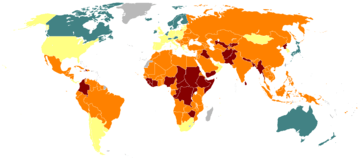
-
 Sudan (+2)
Sudan (+2) -
 Democratic Republic of the Congo (0)
Democratic Republic of the Congo (0) -
 Ivory Coast (-2)
Ivory Coast (-2) -
.svg.png) Iraq (0)
Iraq (0) -
 Zimbabwe (+10)
Zimbabwe (+10) -
 Chad (+1)
Chad (+1) -
 Somalia (-2)
Somalia (-2) -
 Haiti (+2)
Haiti (+2) -
 Pakistan (+25)[31]
Pakistan (+25)[31] -
 Afghanistan (+1)
Afghanistan (+1) -
 Guinea (+5)
Guinea (+5) -
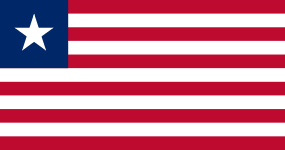 Liberia (-3)
Liberia (-3) -
 Central African Republic (+7)
Central African Republic (+7) -
 North Korea (-1)
North Korea (-1) -
 Burundi (+3)
Burundi (+3) -
 Yemen (-8)
Yemen (-8) -
 Sierra Leone (-11)
Sierra Leone (-11) -
.svg.png) Burma (+5)[32]
Burma (+5)[32] -
 Bangladesh (-2)
Bangladesh (-2) -
 Nepal (+15)[33]
Nepal (+15)[33]
2005
2005 was the first year that the Fund for Peace published the list. 76 states were analyzed, of which 33 were classified as "alert" and 43 as "warning" (ratings better than "warning" were not done in this year). The worst 20 are shown below.[34]
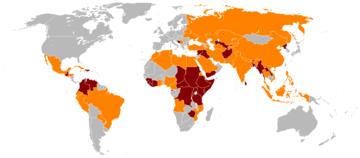
-
 Ivory Coast
Ivory Coast -
.svg.png) Democratic Republic of the Congo
Democratic Republic of the Congo -
 Sudan
Sudan -
.svg.png) Iraq
Iraq -
 Somalia
Somalia -
 Sierra Leone
Sierra Leone -
 Chad
Chad -
 Yemen
Yemen -
 Liberia
Liberia -
 Haiti
Haiti -
 Afghanistan
Afghanistan -
 Rwanda
Rwanda -
 North Korea
North Korea -
 Colombia
Colombia -
 Zimbabwe
Zimbabwe -
 Guinea
Guinea -
 Bangladesh
Bangladesh -
 Burundi
Burundi -
 Dominican Republic
Dominican Republic -
 Central African Republic
Central African Republic
See also
- Failed state
- Rogue state
- Ochlocracy
- Fragile state
- Crisis States Research Centre
- Violent non-state actor
- Pariah state
- Banana republic
References
- ↑ 1.0 1.1 1.2 "Failed States FAQ". the Fund for Peace. Retrieved 2007-08-25.
- ↑ "Failed States list 2007". Foreign Policy magazine. Retrieved 2007-06-19.
- ↑ "Demographic pressures". the Fund for Peace. Retrieved 2007-08-25.
- ↑ "Massive movement of refugees and internally displaced peoples". the Fund for Peace. Retrieved 2007-08-25.
- ↑ "Legacy of vengeance-seeking group grievance". the Fund for Peace. Retrieved 2007-08-25.
- ↑ "Chronic and sustained human flight". the Fund for Peace. Retrieved 2007-08-25.
- ↑ "Uneven economic development along group lines". the Fund for Peace. Retrieved 2007-08-25.
- ↑ "Sharp and/or severe economic decline". the Fund for Peace. Archived from the original on 2002-11-28. Retrieved 2014-12-31.
- ↑ "Criminalization and delegitimisation of the state". the Fund for Peace. Retrieved 2007-08-25.
- ↑ "Progressive deterioration of public services". the Fund for Peace. Retrieved 2007-08-25.
- ↑ "Widespread violation of human rights". the Fund for Peace. Retrieved 2007-08-25.
- ↑ "Security apparatus". the Fund for Peace. Retrieved 2007-08-25.
- ↑ "Rise of factionalised elites:". the Fund for Peace. Retrieved 2007-08-25.
- ↑ "Intervention of other states". the Fund for Peace. Retrieved 2007-08-25.
- ↑ "Failed States Index 2014". Fund for Peace. Retrieved 2014-11-24.
- ↑ "Failed States Index 2013". Fund for Peace. Retrieved 2013-08-23.
- ↑ http://ffp.statesindex.org/rankings-2013-sortable The Failed States Index 2013, Foreign Policy, accessed 19 AUG 2013
- ↑ "Failed States Index 2012". Fund for Peace. Retrieved 2013-04-08.
- ↑ "Failed States Index 2011". Fund for Peace. Retrieved 2013-04-08.
- ↑ "Failed States Index 2010". Fund for Peace. Retrieved 2013-04-08.
- ↑ "Failed States Index 2009". Fund for Peace. Retrieved 2013-04-08.
- ↑ "Failed States Index 2008". Fund for Peace. Retrieved 2013-04-08.
- ↑ Lebanon was ranked 28th in 2007.
- ↑ Sri Lanka was ranked 25th in 2007.
- ↑ "Failed States Index 2007". Fund for Peace. Retrieved 2013-04-08.
- ↑ Uganda was ranked 21st in 2006.
- ↑ Nigeria was ranked 22nd in 2006.
- ↑ Ethiopia was ranked 26th in 2006.
- ↑ 2007 was the first year in which Timor-Leste (East Timor) was included.
- ↑ "Failed States Index 2006". Fund for Peace. Retrieved 2013-04-08.
- ↑ Pakistan was ranked 34th in 2005.
- ↑ Burma/Myanmar was ranked 23rd in 2005.
- ↑ Nepal was ranked 35th in 2005.
- ↑ "Failed States Index 2005". Fund for Peace. Retrieved 2013-04-08.
| ||||||||||||||||||||||||||||||